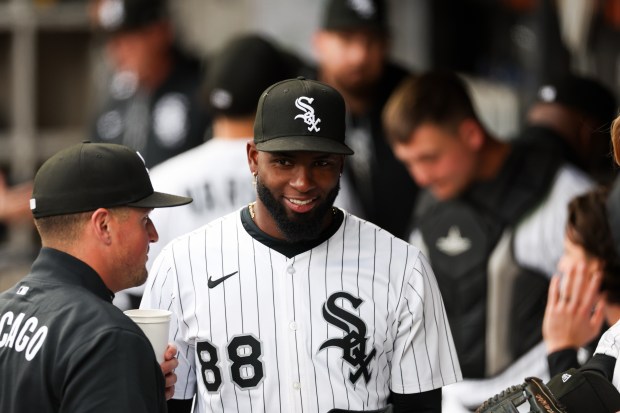LOS ANGELES — Through the end of his days in a USC uniform, Bronny James’ teammates pushed for him to simply shoot the ball more, sensing the 6-foot-4 freshman’s potential as a microwave scorer that never quite translated to reality.
“I mean, it’s going to take time with him to really be that player like he is,” junior Kobe Johnson said, after an early March win. “Right now, it’s just, it’s a learning curve for him, get used to college basketball, get used to all the quickness.”
That learning curve was stunted, for much of a tumultuous freshman year at USC, throughout a continued recovery from heart surgery. And James’ time is up at USC, as he announced Friday morning on Instagram he’d enter the NBA draft while also entering the transfer portal and maintaining collegiate eligibility.
“I’ve had a year with some ups and downs but all added to growth for me as a man, student and athlete,” James wrote on Instagram.
It feels like an abrupt and anticlimactic ending to James’ tenure at USC, which began with his collapse from cardiac arrest at a summer workout. His return after undergoing surgery came a month into the season, in a loss to Long Beach State, where he drew viral comparisons to father LeBron James on a massive chase-down block; his teammates spoke highly of his potential and character at every opportunity, and his athleticism and IQ stood out from his first games of collegiate basketball.
• RELATED: The oral history of Bronny James’ heart scare
“For someone who has – is supposed to be making NIL, $7 million, and got a dad who plays in the NBA and all the things around him, drives a nice car, whatever, whatever – he’s just a humble kid and respectful kid,” USC assistant Eric Mobley said. “He’s a student-athlete. He’s a perfect student-athlete.”
He worked his way back from a minutes restriction through his first few games, though, and was still visibly “catching up” with cardio and conditioning in January, assistant Chris Capko said. His perimeter defense popped, often subbed as part of late-game lineups for his point-of-attack movement and hands.
But James consistently struggled to establish himself as an offensive threat. He averaged 4.8 points, 2.8 rebounds and 2.1 assists on the season in 19.4 minutes a game, and was often tentative with his shot, going through a four-game stretch later in the season in which he didn’t take a 3-pointer in 55 minutes of game action.
And as much praise as James drew for being a clearly down-to-earth, respectful presence, the constant storm of attention around his health, future and status as the son of one of the game’s greats made for an at-times awkward situation at USC.
In the early part of the season amid James’ recovery, Enfield repeatedly declined to give specific updates on his health, citing that a pinpointed timetable wasn’t up to him. Outside of a brief statement in James’ return against Long Beach State, he never once spoke to local or national media, despite repeated requests throughout the season by the Southern California News Group. A bodyguard followed James at every practice and stood on the floor observing him at every game, a continuation from his high school days at Sierra Canyon. And after USC’s games in the Pac-12 Tournament, where every team had a mandated open locker room postgame to media, James still wasn’t made available to media in what a USC spokesperson said was a family decision.
He’ll head for open waters now, beyond a USC program that’s in a rapid state of change after Enfield’s departure and the hiring of Arkansas’ Eric Musselman. If he decides to stay in the collegiate game, one potential fit is Duquesne, where LeBron James’ old high school teammate, Dru Joyce III, has been named the program’s head coach. James had also pinpointed Oregon and Ohio State as top destinations during his recruitment at Sierra Canyon.
But he was more likely to hit the draft than the portal, a source with knowledge of the situation told the Southern California News Group earlier this week. James did both Friday and now stares at a fork in the road – between taking his own path through college basketball and following down the line of his father’s footsteps.



